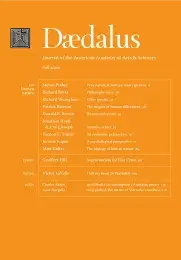The DNA behind human nature: gene expression and the role of experience
The idiosyncrasies of one person cannot be human nature, nor can a feature of human behavior that is merely typical of many animals, such as hunger. Human nature must be the product of a uniquely human, but near species-universal, combination of DNA sequences suitably refracted through typically human environmental experiences.
Those sequences do not have to be only genes. Indeed, recent evidence suggests that regulatory sequences, rather than coding sequences, may be the best place to search for ‘human nature DNA.’ As Steven Pinker has pointed out, it is a historical accident, and the source of much confusion, that genes are equated with the genome by lay people but strictly defined as protein-coding regions by molecular biologists.
Right up until the sequencing of the human genome, a piece of conventional wisdom was confidently repeated as truth by scientists, journalists, and commentators: there were a hundred thousand genes in the human genome, about half of which were unique to the brain. So widely was this ‘fact’ disseminated that it is hard now to discern its original source.1 But it was about as wrong as a scientific assertion can be. We now know that human beings have approximately twenty-five thousand genes (humiliatingly, that is fifteen thousand less than a rice plant has); that most are expressed in both the brain and the body; and that very few indeed, perhaps none, are unique to the human species. Not only do mice also have twenty-five thousand genes, but they have essentially the same twenty-five thousand.
Yet mice are not men. Something must be different. The sequencing of genomes has suggested a new hypothesis: that animal evolution usually works not by inventing new protein-coding genes (this appears to be commoner in plants), but by altering the timing, intensity, and location of the expression of preexisting genes.2 For instance, the Hoxc8 gene essentially tells a developing fetus where to grow a thorax with ribs. Hoxc8 is turned on farther back in a chicken than in a mouse, giving a chicken a longer neck. It is turned on throughout the body of a python, which is almost all thorax. Yet it is essentially the same gene: equivalent Hox genes can be swapped between animal species and still work. Somewhere in each species’ DNA are sequences that cause slightly different tissue-specific expression of Hoxc8.3. . .
Access the full issue here.
